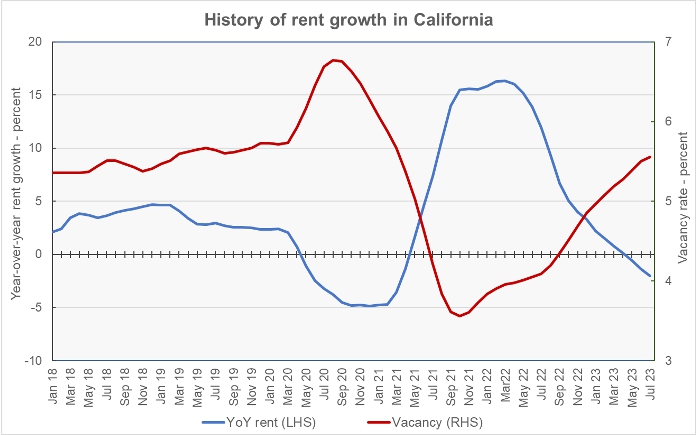The California Secretary of State’s (CASoS) office announced that the rent control initiative called the Justice for Renters Act has qualified for the November 2024 election ballot. California voters will have their third opportunity since 2018 to decide whether local jurisdictions across the state can impose restrictions on landlords’ ability to raise rents.
Backers collected 813,112 signatures in support of the initiative. By random sampling, the CASoS determined that 616,823 signatures were likely valid and not duplicates. This is well above the threshold of 546,651 signatures required to qualify the initiative.
State of play
Since its passage in 1995, the Costa-Hawkins Rental Housing Act has restricted the ability of local jurisdictions in California to impose rent control within their boundaries. The CASoS summary states that Costa-Hawkins “generally prevents cities and counties from limiting the initial rental rate that landlords may charge to new tenants in all types of housing, and from limiting rent increases for existing tenants in (1) residential properties that were first occupied after February 1, 1995; (2) single-family homes; and (3) condominiums.”
The Justice for Renters Act deletes all of the wording of Costa-Hawkins from state law and replaces it with the following: “The state may not limit the right of any city, county, or city and county to maintain, enact or expand residential rent control.” This opens the door to the most severe forms of rent control, including not allowing rents to reset to market rates when a new tenant occupies a property, and to expanding rent control to all types of rental housing and to landlords of any size. It would be strictly up to the local government to decide how far to go.
Assessing the environment
The Justice for Renters Act is primarily a project of the AIDS Healthcare Foundation and its leader, Michael Weinstein, as were the two earlier California rent control ballot initiatives. While the earlier initiatives failed by wide margins, recent rapid increases in rents may energize rent control supporters this time around.
The chart, below, displays the year-over-year rent growth rate along with the average apartment vacancy rate for California starting in January 2018.

The chart shows that California renters saw 12 months of negative year-over-year rent growth starting in May 2020. However, this was followed by 12 months of double-digit positive year-over-year rent growth starting in August 2021. While year-over-year rent growth has recently again turned negative, fresh memories of rapidly rising rents may cause more Californian voters to consider supporting rent control this time around.













